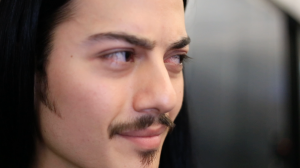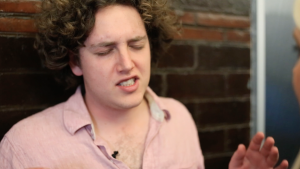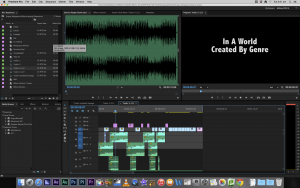During week 12’s lecture the concept of the Transnational format was explored through The Office and its move from Britain to America. I’d like to explore how the transnational format works and doesn’t by comparing the success of The Office to the failure of Kath & Kim in the US.
The difference between American and British Humour is an article in which Ricky Gervais, the creator of the original series The office, talks about the changes that had to be made in the American version of The office. It was understood that American and British humour were different and what would seem funny to the British seemed offensive to America. One of the main changes that Gervais mentions is the change in Michael Scott, the main character, who used to be teasing and ironic sarcasm his main weapon, had to turn into a nice guy, with a “rosier outlook to life”. So even though it is the same show with the same title and the same characters, changes had to be made to reach the national culture of its viewers. It is fair to say that The Office US was a huge success, starting in 2005 the show ran for 9 seasons, potentially proving that changing a show to suit a different national audience is possible (Time 2011).
There is however, plenty of examples where the format failed. Kath & Kim was written, produced and cast in Australia. The show was extremely successful in Australia running for 4 seasons including two movies. The television show is set in a fictional town in the Melbourne outer-suburbs and draws humour from the “bogan” caricature of a mother and daughter relationship. “The humour is derived from local references, garish costuming and cringe-worthy mispronunciations to create a light-hearted parody in representation of the Australian lower middle-class” (Webb 2013). Ultimately this show is a success because it draws on the ability of its Australian audience to laugh at themselves.
In 2008 Kath and Kim was sent overseas into America, there was big hype about it in Australia, a sense of national pride that we were now influencing America. Unfortunately the hype didn’t last long and the show was cancelled after only 2 episodes aired, due to low ratings. Why did this happen? The shows format was translated into an American equivalent, instead of the Australian “Bogan”, they were America “White Trash”, the story followed the day to day lives of a mother and daughter relationship and the actors had an American accent! There is no denying that it was American. So, without including outlying factors, the only thing to blame is the American audience didn’t like the format, which was originally Australian. Where the Australian culture was happy to laugh at themselves and understood the joke, American culture is not as prone to self humiliation as a form of humour (Webb 2013).
It is interesting to note, however, that Australians have been watching American comedies for years, Friends, Seinfeld, How I Met your Mother and the Big bang theory have all stayed on our screens for multiple seasons, which raises the question if you truely have a transnational format, do you need to change anything, or can you send it over pre-packaged? There is definitely other factors that should be considered like locations within the story, money, star power and international acclaim, however if we’re just taking the show for face value, sometimes the format of a show just doesn’t fit with the culture of a certain audience.
Ultimately Kath & Kim failed in America because it didn’t reach its local audience like it had in Australia. This is due to the fact that the two different cultures possessed different attributes in humour, the irony and sarcasm lost in the US audience which is the entire format of the show.
References
Webb, M 2013, Television, ‘Humour and Transnational Audiences’, weblog post, 2 December, The Artifice, viewed 26 October 2015, <http://the-artifice.com/television-humour-and-transnational-audiences/>
Time 2011, ‘The difference between British and American Humour’, Time inc., viewed 26 October 2015, <http://time.com/3720218/difference-between-american-british-humour/>


